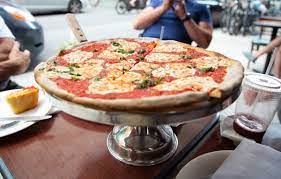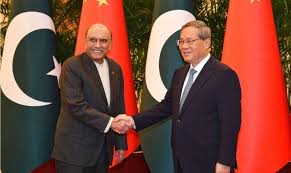Italy will win the food wars

Kenneth Rosen
Venice: Twice each week, a caravan of macellai, pescivendoli, and fruttivendolo comes to town. They swell the streets beneath a medieval castle keep in the 14th-century northern Italian city where my family maintains a home.
When time allows, on Tuesdays or Fridays past, I’d stroll through the mercato, plucking from the stalls regional olive oils, Parma ham and various locally-sourced full-fat cheeses like Asiago, which takes its name from the village where it is produced a few kilometres away. In the Venetian Prealps south of our home, prosecco is the product of origin, one of our regional culinary mascots.
Our diet here, in the shadow of the Dolomite mountains, is traditionally and contemporarily heavy: full of fatty meats like cotechino, a pork-stuffed sausage, or carbohydrates like pumpkin breads and risotto simmered in cream. It’s not the Mediterranean diet of Southern Italy where our butter is replaced by their olive oil, fish favoured over fawn and beef. Yet here’s the thing: for all its heft, the northern cucina tipica is counterintuitively healthier.
Just about 10% of those living in northern Italian regions are obese; a third of their southern counterparts. Pre-pandemic, the Centers for Disease Control released a report in which it noted 42% of Americans were obese. The difference? Experts suggest that while Americans are eating more calories, central and southern Europeans like Italians are eating more delectable calories, though fewer of them. Those hearty calories are now a wedge being driven between some of the European Union’s largest economies.
For the last few years, Italy has fought against a Farm-to-Fork food labelling scheme first introduced by France. The label, called Nutri-Score, would classify foods and drinks based on their nutritional value, and would place a large-scale ranking on foods: from A (healthy) to E (not so healthy). Germany, the Netherlands, Switzerland and Belgium opted to adopt the system. Italians are pleasure-loving vanguards against bureaucracy who, through casual interdiction which encourages a decentralising of food. Put simply, no one tells an Italian chef how to prepare her cotochino.
It’s no surprise Italy takes this affront to its food seriously. Food and drink are passionate exports and the allure for many foreign visitors. They are big businesses, commercially and as the bulwark of the country’s heritage. And tradition, if not history, maintains a precedent for the nation’s flustered response to any nation telling it how to designate its food: in 2013, the Italian government protested the United Kingdom’s placement of “traffic light” warnings on its imported products, calling them counter to “the Mediterranean food culture.” Scientists with the European Consumer Organisation (BEUC) have said their data suggests a labelling system is the next step in preserving food culture and national health across the 26 member states of the European Union. Nevertheless Italy, the bloc’s third-largest economy, insists the system discriminates against a nonnegotiable way of life, and remains opposed to what I’ll call pantry-meddling.

The opposition to the system is par for the country’s history of protectionism. It also underscores a deeper outright political insouciance. Unfair, uncompromising trade is a decades-old argument in favour of domestic solidarity and a play against foreign competition. In one instance, in 2018, the latest trademark directive by the European Union Commission issued legislation for food labelling that denoted the provenance of the primary ingredient, which drew waves of criticism from Italy. The decree did consider many preexisting Italian decrees, but made obsolete a graphical representation sufficiency for products registered in the EU. This meant that an Italian flag on a bottle of mayonnaise was OK, even if the product wasn’t made or sourced in Italy. You could call it Italian Uova-nnaise and still cross no fault lines.
The absurdity of a labelling system is not about the wholesale ingredients or products, but rather how they are administered. Take the cacio e pepe en vessie at Lido 82, off Lake Garda in the Lombardy region. Homemade pasta is steamed inside a pig’s bladder. (On a recent visit, it was as delicious and heart-wrenching — figuratively, cardiovascularly — as it sounds.) Were the labelling system to apply to outright dishes, does one label that A for use of organic products locally-sourced? Or F, for the artillery assault? If they are, as the system is intended, labelled individually, what value is the system when a mixture of ingredients can propel foodstuff from healthful to harmful?
While some restaurants have made strides to accommodate dietary restrictions, opening once-exclusive cuisines, some refused. At St Hubertus, the three-star Michelin restaurant in the Trentino-Alto Adige region of northern Italy, they “cook the mountain”. Dietary restrictions for vegans, vegetarian and gluten free, or vegetarian with no dairy products can’t be accommodated, something flatly stated on the menu.
There are further reasons not to be so bullish about food labelling and product origin and marketing beyond economical drivers. The nation plays host to food detectives who sniff out counterfeit “parmigiano” from Lithuania and are at constant odds with an organised crime network known as the “agromafia”, which falsifies fine olive oil and wine to the tune of $16 billion annually. So serious do the Italians take their food, the country’s top court recently ruled that serving frozen food is considered fraud.

For its part, over the past 20 years the EU has indeed worked closely with Italy to create a system of highly-regulated geographical indications and denominations, first introduced in 1992 and further expanded in 2012, that anyone who has tried to buy a bottle of wine or cheese would notice. As with the Italian bureaucracy, the convoluted acronym alphabet of STG (Specialità Tradizionale Garantita – Traditional Guaranteed Specialty), IGP (Indicazione Geografica Protetta – Protected Geographical Indication), DOP (Denominazione d’Origine Protetta – Protected Designation of Origin), and DOCG (Denominazione di Origine Controllata e Garantita), among others, already serve to protect Italian food sovereignty. But while the labelling helps consumers distinguish between genuine products of origin, does a DOCG label prevent an alcoholic from drinking several bottles in one sitting? And would increasing the size of the “alcohol by volume” tag decrease alcohol abuse by minors?
Labels would seem the perfect issue for Italy to combat, if not for its devout marriage to Italian identity and branding, then because its politics make little sense. (See: a continual collapse of the government over petty in-fighting while the country persists through rolling recessions, and parliamentary officials continue being three times the European average and earn more monthly than some Italians do annually.) So rather than stand by its own principle that food cannot simply be labelled, it has cowered into forming its own caustic labels, an answer to the Nutri-Score called (unimaginatively) the Nutriform battery, an attempt to label food more precisely but still antithetical to the notion that pork from X is not as unhealthful as pork from Y.
Think of the Nutriform battery as the perishables equivalent to America’s yellow-and-black EnergyGuide labels. A series of battery icons display the percentage of energy, fat, saturates, sugars and salt in a sample portion of a food product. For all its bloated bureaucracy, the Italian initiative seems more promising than what is being proposed by France, if only to underscore a decades-old rift between northern and southern bloc members. (The nations’ own protectionism battles date to pre-First World War.) The Greek minister of agriculture followed Spain’s lead in questioning the French label; Romania fell behind the Nutriform battery system. Both argued the Nutri-Score’s underlying ranking system doesn’t account for additives or how the food is processed, regardless of its freshness.
Yet in studying the effectiveness of food packaging labels, a team of researchers looked at the impacts of a 2016 Chilean law requiring black stop signs with the words “high in sugar” or “high in calories” to be placed on food packages, an initiative which was later adopted by Peru, Mexico, and Israel, and imitate the blunt warnings on tobacco products. The researchers focused on breakfast cereals and found that not only were consumers more likely to choose healthier options after the labels appeared, but manufacturers also tweaked products to change their labelling requirements. The former Italian Agriculture Minister perhaps put it best, in 2020: “A true nutritional education cannot be replaced by labels,” arguing that there were no healthy foods, “only healthy diets.” In other words, sticking with tradition, to include mealtime education, the way Italians treat wine as a food and not a singular enjoyment.
Which is how my two young children, aunt, wife, and a family friend found ourselves at a recent dinner. Polenta (think: Italian grits) and burrata, with a side of vegetables, were on the menu. It was served like this: heaps of burrata were placed on a wooden serving board and a copper pot filled with the boiled cornmeal was dumped atop it. Small portions, and the occasional wine or cocktail, were enjoyed together. The weather outside was cold, the fireplace inside warm, and the dinner an ever greater insulator. No labels could halt this, such a divinely sacrilicious tradition. And no one can tell us to not steam our pasta al dente in animal offal, or that it’s unhealthy. It’s how, now what, we eat that makes the difference.





